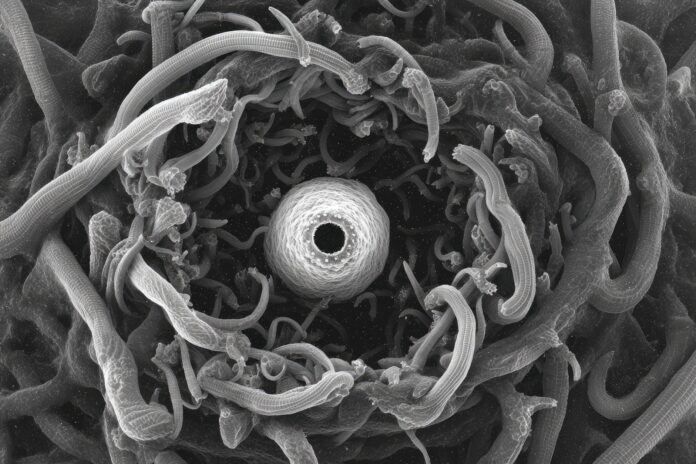The Living Marvel: Nematode Towers That Move as One
A tower of worms isn’t just a bizarre sight—it’s one of nature’s most remarkable examples of collective intelligence and cooperation. Recently, scientists have captured footage of tiny nematodes—commonly known as roundworms—forming coordinated, writhing towers. These living pillars behave as if they are a single, highly responsive superorganism, challenging everything we thought we knew about these humble creatures [1].
More Than a Pile: The Rise of the Worm Superorganism
Most importantly, nematodes, measuring just about a millimeter in length, combine their efforts to build vertical, cohesive structures. These towers are not static. When observed in the lab, the worms responded to touch, wriggling and moving toward stimuli as though acting with a single brain [1]. In fact, study author Daniela Perez explains, “A nematode tower is not just a pile of worms. It’s a coordinated structure, a superorganism in motion” [2]. This behavior has previously only been seen in a handful of other organisms, such as slime molds and fire ants, making its occurrence in nematodes especially intriguing [3].
How Do These Towers Form?
Researchers recreated the phenomenon in the lab using Caenorhabditis elegans, a widely studied nematode species. By placing a toothbrush bristle on an agar plate devoid of food, they provided a central scaffold. In just two hours, the worms self-organized into a tower around the bristle. What’s even more fascinating is how each worm played a different role—some became the tower’s exploratory arms while others bridged spatial gaps, all moving with purpose and cohesion [2].
When researchers gently tapped the top of the tower with a glass pick, the worms instantly sensed the vibration, wriggling and growing in that direction. Their ability to sense and respond collectively highlights an extraordinary level of cooperation for such simple animals [4].
Wild Towers: No Longer Just a Lab Curiosity
Until recently, towering behavior had only been observed under artificial conditions. However, for the first time, scientists documented the formation of these worm towers in the wild. Searching through decomposing fruit in orchards, researchers at the Max Planck Institute of Animal Behavior witnessed these living stacks firsthand [5]. Their fieldwork confirmed that this behavior has real ecological relevance and is not merely a laboratory oddity.
Why Do Worms Form Towers?
The question remains: Why do these nematodes form such intricate superorganisms? While the exact reasons are still being investigated, some researchers speculate these structures may help the worms find new resources, escape environmental stress, or improve their chances of survival by mimicking larger organisms. Unlike ant colonies, which have castes and specialized roles, these worm towers display an egalitarian cooperation—every worm contributes to the architecture regardless of age or status [4].
Superorganisms: A Broader Biological Phenomenon
Besides that, the tower of worms puts nematodes in the spotlight as a model for studying superorganism behavior. Similar cooperation appears in other systems, like slime molds aggregating into a slug or fire ants forming rafts. However, the writhing towers of nematodes are unique in their flexibility and responsiveness [3].
The Future of Superorganism Research
This discovery opens up exciting avenues for research into collective animal behavior and the evolution of cooperation. As scientists continue to explore these living towers, they are likely to uncover new principles of organization that could inspire innovations in robotics, synthetic biology, and even swarm intelligence algorithms.
Therefore, next time you see a clump of worms, remember: you might be witnessing a complex, coordinated organism in action—nature’s own squirming tower of collaboration.
References:
[1] science.org
[2] livescience.com
[3] english.elpais.com
[4] bgr.com
[5] iflscience.com



